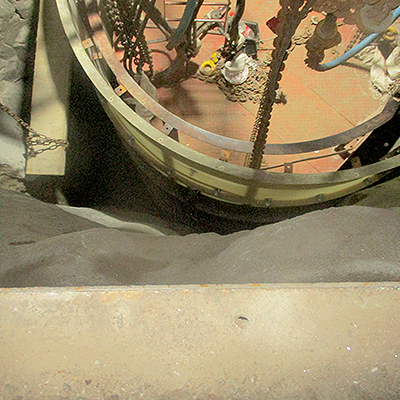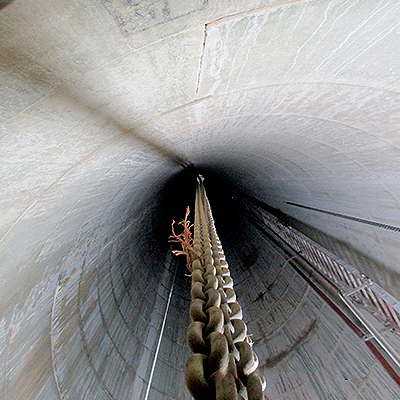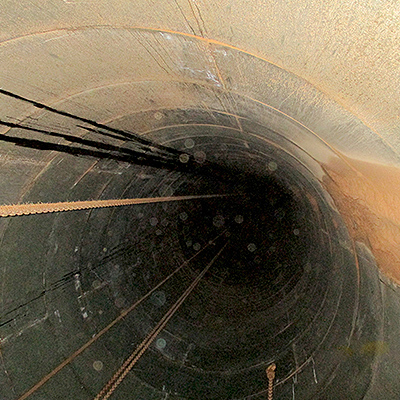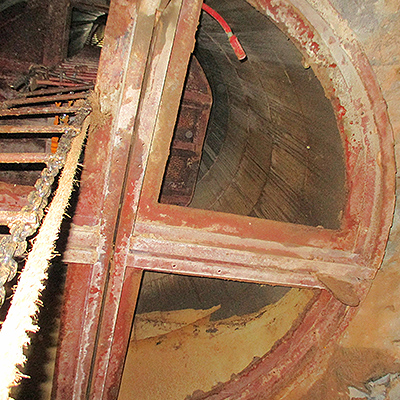Currently viewing: News Press Releases
Press Releases
-
ORE PASS REHAB TECHNOLOGY ADVANCES TO KEEP MINES PRODUCING
Tuesday, 01 August 2023
If the lifeblood of underground mines is the ore that must find its way to surface, then it is no exaggeration to describe the ore passes as the mines’ arteries – and the innovative tube-and-fill method of rehabilitating ore passes from Murray & Roberts Cementation is proving itself safer and more durable.
When the ground condition of an ore pass deteriorates and prevents ore from moving smoothly, production invariably comes to a halt, explains Pieter Oosthuysen, Senior Project Manager Mining Services at Murray & Roberts Cementation. Ore flow within a typical underground mine is managed through an extensive system of passes, which allows ore to drop to the bottom of the mine – from where it can be transported to the surface and processed. Over time, these passes deteriorate through a combination of normal wear and tear, abrasive wear due to rock flow, changes in the stresses upon them and the quality of surrounding geology.
“Current rehabilitation methods used in the market have variable levels of effectiveness and application, but the ultimate goal is to remove people from these hazardous environments and find more innovative ways of rehabilitating these excavations,” he says.
Murray & Roberts Cementation has been doing this vital rehabilitation work for decades, all the while developing better and safer technologies. Among its most exciting innovations has been Its tube-and-fill method, first applied about seven years ago at an underground platinum mine in South Africa. The early installations have proved so successful that they are expected to outlast the normal five to 10 year lifespan of an ore pass rehabilitated in the traditional way with shotcrete.
“With a well-established legacy as an underground mining contractor, we rehabilitate a wide range of underground mining infrastructure – and ore pass rehabilitation is an essential aspect of this,” says Oosthuysen. “The work is not only challenging but can be hazardous, so we approach this work with stringent safety systems in place, while also continuously looking for ways to avoid people having to be in potentially dangerous environments in the first place.”
In the tube-and-fill method of rehabilitation, a fibreglass tube is lowered down the ore pass once the pass is drained and cleared of all obstructions. A specialised mix of self-levelling concrete is then poured in from the top. This concrete – which is high strength and resistant to shear wear – fills the outside area between the tube and sidewall, creating a new lining of the ore pass system.
“The tube is essentially a sacrificial shutter that can be lowered down the ore pass,” he explains. “This can be done without anyone having to climb down the ore pass, so using this methodology has a significant safety advantage.”
This is an important advance on the traditional method which requires people and material to enter the system every day – leading to relatively high exposure to hazardous areas. In addition to being labour intensive, it also requires a rock engineer to inspect regularly and frequently – to give recommendations and approve the installed support.
At the heart of the tube-and-fill method are reinforced rings of special fibreglass, with varying diameters up to a maximum of 3.5 m. The use of relatively light fibreglass – instead of much heavier material like steel – makes it possible to easily transport the tube segments and to assemble them underground. With a tube segment weighing just 80 kg, this means that a tube for a 60 m ore pass will weigh only around 5 t.
At the same time, the reinforced design enables the fibreglass to withstand considerable hydrostatic pressure from the concrete being pumped on the outside. The concrete mix – designed in collaboration with concrete and admixture producers – is able to achieve final UCS strengths of up to 70 MPa.
“When replacing the original rock into which an ore pass has been created, we attempt to get our linings as close as possible to that rock strength,” he says. “This specialised concrete mix design allows us to achieve close to 50% of the original rock strength.”
He notes that the mass fill product also creates a more abrasive lining when compared to the shotcrete sprayed lining.
Fanie van Emmenes, Project Manager Mining Services at Murray & Roberts Cementation highlights that the early tube-and-fill installations are proving more durable than the traditional shotcreting approach. This, points out Van Emmenes, also demonstrates that it is more cost effective over the life of the mine.
Murray & Roberts Cementation considers a range of options for customers when proposing solutions for underground rehabilitation. Another method that is used for ore pass rehabilitation is to lower a specialised robotic shotcrete unit into the ore pass, where it applies the concrete to the sidewall without the need for personnel to enter this hazardous zone. One of the limitations, however, is that the level of scaling cannot be too advanced, and this method is used for preconditioning of the ore passes immediately after being developed
The mass fill and redrilling of the ore pass is yet another option. Here, the whole ore pass is filled with low-strength concrete, and a raisebore machine redrills through the mass fill to create a new ore pass system. Irrespective of the method, he says, safety remains the priority – with Murray & Roberts Cementation’s comprehensive and proven protocols earning the company an enviable safety record.
“This includes proper ventilation systems, monitoring for hazardous gases, personal protective equipment (PPE), and emergency response plans,” he says. “We also ensure adequate training and supervision, which are essential to mitigate safety risks.”
Oosthuysen concludes that the success of the tube-and-fill method would make it the company’s first choice for most applications. He argues that this approach is likely to see increased uptake as the durability of the initial installations become well known.










